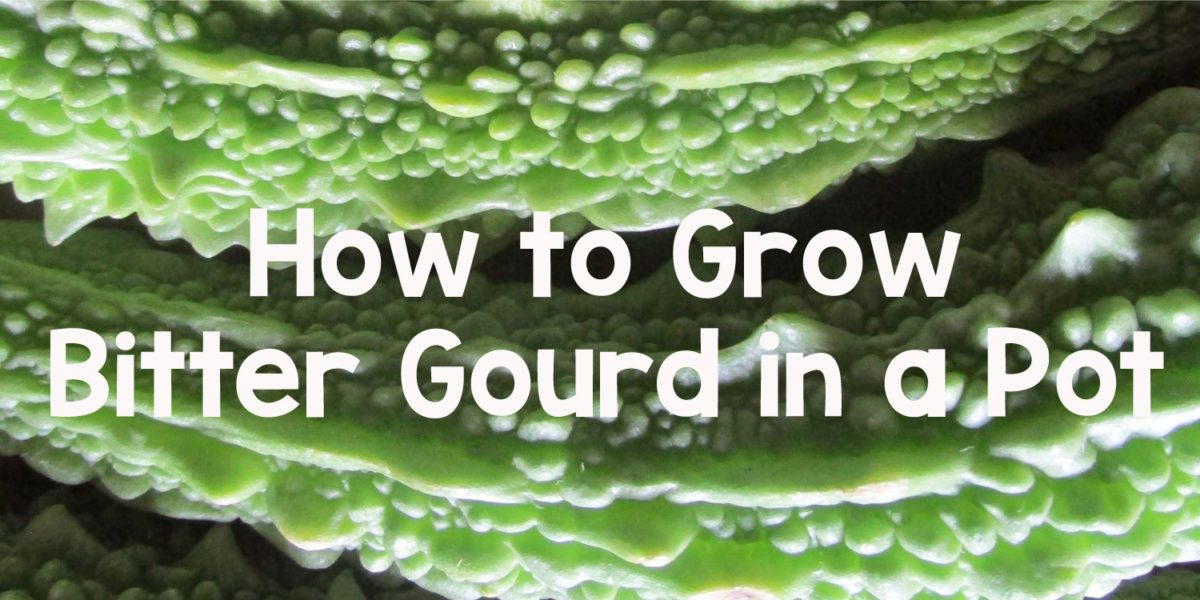Bitter gourd is not exactly a favourite vegetable of most people. But there are also quite a few like me who love bitter tasting stuff like neem flowers, dark chocolate and of course bitter gourd. In fact in a complete Odia thali it is difficult not to find something bitter. Bitter tasting stuff is actually very good for the body. In fact if you did a search on internet you would find that Bitter gourd is an excellent source of Vitamin B, C, magnesium, zinc, phosphorus, manganese and iron. It contains twice the beta-carotene than broccoli, twice the calcium of spinach and twice the potassium of banana. In simple words it is a super food. And the good news is to grow bitter gourd in a pot is child’s play.
Quick Reference Table to Grow Bitter Gourd in a Pot
| Item | Value |
|---|---|
| Growing Temperature | 25 – 38 °C |
| Germination Temperature | 30-35 °C Ideal |
| Germination Time | 7-12 days |
| Soil pH | 5.5 to 6.7 |
| Sunlight Need | 6-8 hours per day (Sun loving Plant) |
| Preferred Planting Method | Direct sowing |
| Container size | 10-15 liter per plant |
| Time to Harvest | 60-80 days from germination depending on variety |
| Harvest Period | 30-60 days |
| Pollination | insect/bee pollination |
| Typical Pests | Mexican bean beetle, Mites |
| Typical Diseases | Powdery Mildew |
| Best season to grow in India | March to October |
Grow Bitter Gourd in a Pot
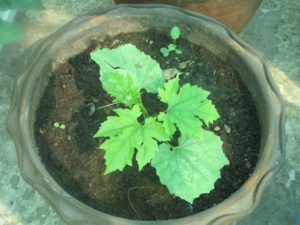
Bitter gourd is a climber plant, and hence you need to have trellis arrangement for it to grow. However the plant and fruits are quite light in weight and hence can be grown on any kind of trellis system. In our garden we use the vertical space above the parapet on our terrace to grow bitter gourd. A simple fishing net held in place by a few steel angles drilled to the parapet does the trick. This way we also end up utilizing vertical space of our rooftop garden.
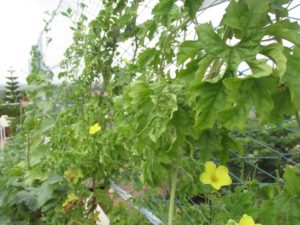
Bitter gourd seeds have a hard cover and hence pre-soaking the seeds overnight before sowing them helps in faster germination. To decrease the germination time even further you can also first germinate the seeds in a bottle before sowing them. To sow the seeds make approximately 1/2 inch depressions in the soil, place the seeds on their side and cover them up with loose soil. Water gently so that the soil is not disturbed to expose the seed. Keep the soil moist all the time. You can plant 4-5 seeds in a 15 liter pot. Keep 1-2 plants in a 15 liter pot and remove the others when seedlings have developed at least four true leaves. Young bitter gourd plants are sometimes susceptible to cutworms. So it is a good idea to wrap the base of the plant with aluminium foil when bitter gourd plants are young. This will create a physical barrier between the plant and cutworms.
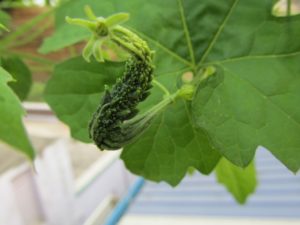
Bitter gourd plant has both male and female flowers. The female flowers are pollinated with pollen from the male flower to bear fruit by bees and other insects. Hence you must have at least 3-4 bitter gourd plants growing together. This will ensure that there is sufficient mix of male and female flowers. When the plants start flowering it is time to amend the soil with good quality compost. This will help in the plant getting the required energy to bear fruits. If you find too many female flowers falling off the plant it is possible that they are not getting pollinated. Hand pollination helps when pollinator like bees and wasps are absent in your garden during flowering.
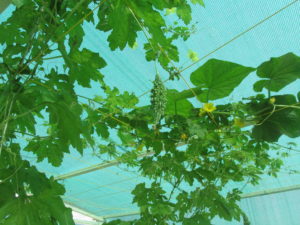
Bitter gourd is a summer vegetables. But in extreme heat conditions it is better to grow them under partial shade. At very high temperatures the fruits tend to get ‘cooked’ in the sun; they become soft and dry.
Harvesting Bitter Gourd and its leaves
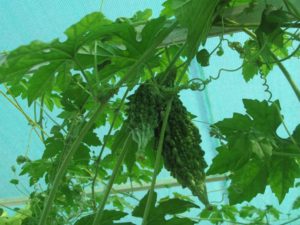
Bitter gourd leaves are used in cooking and many people even use it in juices. But harvesting leaves on a daily basis can weaken your bitter gourd plant. In case you are harvesting leaves from your bitter gourd plant make sure that you don’t do it too often. You can harvest leaves once in a fortnight at best.

It takes about 10-14 days for bitter gourd fruit to become mature after the blossom has dropped. As bitter gourds have the same color as the leaves they are easily camouflaged. The smaller variety bitter gourds are more difficult to spot than the bigger ones. Examine your plant from all sides to spot all mature bigger gourd for harvesting. If you miss them they will ripen soon and become unfit for eating.


